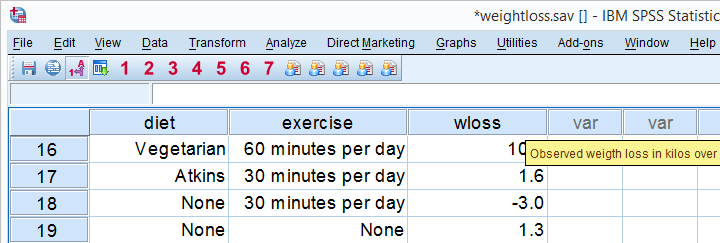
Handpicked Content: When Does a Difference Matter? Using ANOVA to Tell If the null hypothesis is not true, then this F-ratio will become larger, and the larger it gets, the more likely it is that the null hypothesis will be rejected.

How can this be interpreted? If the null hypothesis is true, meaning m 1, m 2 and m 3 are all equal, then the variance between the samples is 0 (zero) (i.e., the F-ratio is also zero). Step 3: Compute the Ratio of Variance Between and Variance Within To obtain the variance within, use this equation: In Minitab software, SS between is called SS factor, variance between is called MS factor and K – 1 is called DF.)Īgain, first compute the sum of squares within. (This example uses Microsoft Excel software. In other words, the variance between is the SS between divided by k – 1: Where k is the number of distinct samples. Since there are three sample means and a grand mean, however, this is modified to: Now, the variance between or mean square between (ANOVA terminology for variance) can be computed. This can be easily found using spreadsheet software: Where x-bar is the sample mean and x-double-bar is the overall mean or grand mean. Handpicked Content: Help for Practitioners Trying to Understand ANOVA Table Steps for Using ANOVAįirst, the sum of squares (SS) between is computed: The red arrows show the variation of the sample means around the grand mean (the variance between). The black dotted arrows show the per-sample variation of the individual data points around the sample mean (the variance within). The following figure displays the data per method and helps to show how ANOVA works. How ANOVA Worksīasically, ANOVA compares two types of variances: the variance within each sample and the variance between different samples. But note: ANOVA is not used to show that variances are different (that is a different test) it is used to show that means are different. The technique requires the analysis of different forms of variances – hence the name. But if each test is 0.05, the probability of making a Type 1 error when running three tests would increase.Ī better method is ANOVA (analysis of variance), which is a statistical technique for determining the existence of differences among several population means. One way is to use multiple two- sample t-tests and compare Method 1 with Method 2, Method 1 with Method 3 and Method 2 with Method 3 (comparing all the pairs). It is thought that the population means of the three methods m 1, m 2 and m 3 are not all equal (i.e., at least one m is different from the others). The results are summarized in the following table: Compute the appropriate test for the data provided below.Three methods used to dissolve a powder in water are compared by the time (in minutes) it takes until the powder is fully dissolved.
#One way anova examples with solutions pdf trial
After two months, the rats were tested on a variety of learning measures (including the number of trials to learn a maze to a three perfect trial criteria), and several neurological measure (overall cortical weight, degree of dendritic branching, etc.).

Rats were randomly assigned to be raised in one of the four following test conditions: Impoverished (wire mesh cage - housed alone), standard (cage with other rats), enriched (cage with other rats and toys), super enriched (cage with rats and toys changes on a periodic basis). Neuroscience researchers examined the impact of environment on rat development.

A research study was conducted to examine the clinical efficacy of a new antidepressant.


 0 kommentar(er)
0 kommentar(er)
